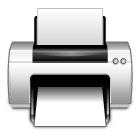Pharmacology - Drugs acting on the bladder

|
| Video (0) |
Audio (0) |
Figures (0) |
|
|
Drugs acting on the bladder
Anti-cholinergic agents
-
Include Oxybutynin, Tolterodine, Propiverine, Solifenacin
-
Result in improvement in 57-71% of women with detrusor overactivity
-
There is s significant placebo effect.
-
Side-effects,especially dry mouth appear to be less common with newer agents like Solifenacin.
Oxybutynin - Side-effects include:
-
Nausea, constipation, diarrhoea and abdominal discomfort
-
Dry mouth (88%)
-
Blurred vision
-
Voiding difficulties
-
Headache, dizziness, drowsiness, restlessness and disorientation
-
Rash, dry skin, photosensitivity
-
Arrhythmia
-
Angioedema
Tolterodine has similar efficacy to oxybutynin but is be better tolerated
Propiverine is also a calcium channel blocker
Solifenacin is a newer agent with organ selectivity for the bladder over the salivary gland. Similar efficacy to other agents with respect to bladder function.
Tricyclic antidepressants
-
Have anti-cholinergic effects and also sedative - useful in nocturia and nocturnal enuresis. Main side-effects are drowsiness and postural hypotension
Anti-diuretic hormone DDAVP
-
Effective in treatment of nocturia and nocturnal enuresis. Contraindicated in cardiac disease and women on diuretics. Side-effects include fluid retention with hyponatraemia, epistaxis, nasal congestion and rhinitis with nasal spray
Oestrogen
-
Effective in relieving symptoms of uro-genital atrophy in post-menopausal women (frequency, urgency and dysuria), no evidence that it is effective in proven detrusor overactivity
Duloxetine
-
Combined serotonin and noradrenaline re-uptake inhibitor
-
Increased synaptic concentrations of noradrenaline and 5HT within the pudendal nerve results in increased stimulation of the urethral sphincter
-
Increases sphincter activity in the storage phase of the micturiction cycle
Clinical use
-
Treatment of stress incontinence - useful in women awaiting surgery or women who have not completed their family - contraindicated in pregnancy
-
May be used in women who wish to avoid surgical intervention - physiotherapy remains a useful first line option
-
Cannot be considered as an alternative to surgery as long-term data not available
Side-effects
-
GI disturbance particularly nausea and dry mouth
-
Headache, decreased libido, anorgasmia
-
Withdrawal reaction is characterised by headache, nausea, paraesthesia, dizziness and anxiety - drug should not be stopped abruptly and dose should be reduced over a 2 week period
Contraindications
-
Pregnancy, lactation
-
Hepatic impairment
-
Monoamine oxidase therapy
-
Lowers seizure threshold therefore avoid in epilepsy
-
Can enhance the anti-coagulant effects of warfarin
-
Metabolised by the same enzymes as ciprofloxacin and fluvoxamine - avoid co-prescription
-
Avoid co-prescription with SSRIs and tricyclic anti-depressants
|
| Comments |
| No comments |

